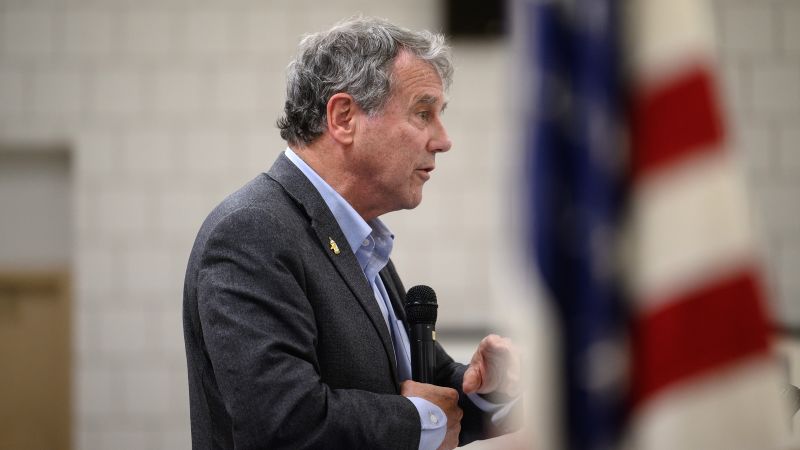Former Ohio Senator Sherrod Brown is actively preparing to launch a campaign for the Senate in 2026, as reported by CNN through sources close to him. After experiencing a defeat in his previous election bid two years ago, Brown remains determined to vindicate his standing in the political landscape following three decades in Congress. His decision reflects months of contemplation and has injected a new layer of complexity into the Democratic Party’s battle for Senate control amidst an increasingly Republican-leaning Ohio.
Brown’s announcement signifies more than just a personal comeback attempt; it represents a strategic maneuver for the Democratic Party as they face an uphill struggle in the Senate. Republican dominance is on the rise in Ohio, particularly with figures like Jon Husted, who was appointed to the Senate earlier in the year, preparing for his re-election campaign. Brown’s return to the political arena is calculated and strategic, and Brown is keenly aware of the challenges that lay ahead.
In his farewell speech delivered on the Senate floor back in December 2024, Brown expressed his commitment to his constituents, stating, “It’s not, I promise you, the last time you’ll hear from me.” This proclamation sets the tone for his renewed bid for office, revealing his intent to remain an active figure in Ohio’s political landscape. Although an aide to Brown did not immediately provide comments regarding the campaign, the enthusiasm among Brown’s allies suggests significant support behind his decision.
Jon Husted’s appointment by Republican Governor Mike DeWine to fill the seat that was previously held by Vice President J.D. Vance indicates the increasing importance of this race. Historically, Brown has been known for his ability to secure victories in controversial races, previously defeating DeWine when he was a candidate for the Senate in 2006 and successfully defending his seat against formidable opponents in subsequent elections.
The political dynamics in Ohio have evolved; during the 2012 presidential elections, Ohio was regarded as a battleground, but by the 2024 election, it had shifted to being perceived as decidedly non-competitive. Despite Brown’s efforts to distance himself from the Democratic ticket, he lost by a narrow margin of 3.6 percentage points, in stark contrast to Vice President Kamala Harris, who faced an 11.2-point loss within the state.
For the Democrats, the stakes are high as they aim to reclaim control of the Senate by securing a net gain of four seats in the upcoming midterm elections. This is further complicated by a challenging electoral map, with key Democratic-held seats in swing states such as Georgia, Michigan, and New Hampshire being defended, while available opportunities for takeover remain limited.
Interestingly, Democrats have managed to attract notable candidates in other states, with former North Carolina Governor Roy Cooper being a promising prospect for flipping a Republican-held Senate seat. Brown’s strategy may be influenced by these developments as he navigates a path to regain his own political power.
In Ohio, other states such as Maine and Texas also present future competitive opportunities for Democrats, especially with their local incumbents facing various challenges. Notably, Brown also contemplated a run for Governor amid speculation surrounding DeWine’s term limits.
Even though the election is over a year away, it seems that both Brown and Husted might emerge as standard-bearers for their respective political parties. The Democratic establishment has actively courted Brown, while Republican forces, including former President Donald Trump, have rallied around Husted, minimizing the chances of internal party challenges to his candidacy.
Following the announcement of Brown’s candidacy, Republican operatives wasted no time launching criticisms toward him. Senator Cory Gardner, chairman of the Senate Leadership Fund, remarked on Brown’s timing and participation in a recent dinner with Senate Majority Leader Chuck Schumer, framing him as a symbol of what he contends are Democratic failures. This exchange marks a renewed phase of the political battle as both parties gear up for a pivotal election season.
As this story unfolds, it’s clear that Sherrod Brown’s decision to return to the political arena is one that encapsulates not just personal ambition but also reflects broader party dynamics, electoral strategy, and the deeper ideological divides present in Ohio and across the nation. The implications of these moves could have lasting impacts on the future control of the Senate as both sides prepare for what promises to be a tumultuous election cycle.











